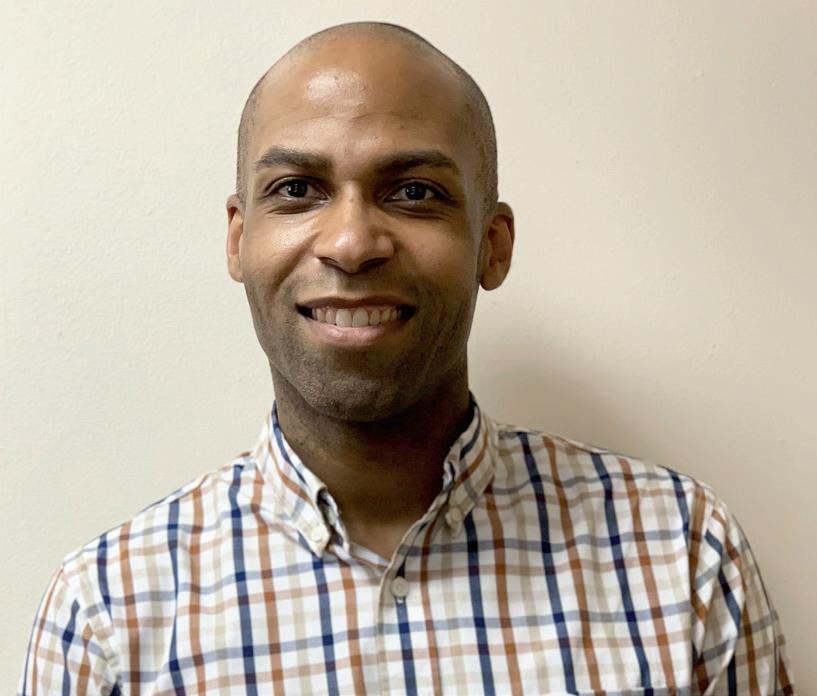
7 minute read
Little Child Blue
from WILD - May 2021
Ensuring Children’s Wellbeing During Covid-19
Words Dwain Hebda images Jade Graves Photography and courtesy Kenneth Roy
As a mental health professional, Rebecca Whitson of The Whitson Group in Fort Smith has grown accustomed to seeing teens and young adults stuck in dark places. Specializing in serving individuals fourteen and up, her clientele includes kids for whom high school, college or just daily life is a constant or near-constant struggle with anxiety, depression, and the loneliness of mental illness.
But for all she’s seen, the covid-19 pandemic threw something new into the mix. Never before have conditions been so dramatically compounded, never before has she had to find ways to convey empathy and caring exclusively through a video monitor. And never before has she been as concerned over what happens next.
“What I’m seeing is almost across the board, an increase in anxiety, an increase in depressive symptoms, an increase in loneliness and isolation and an increase in relational issues,” she says. “For some kids, the safety net of going to school was taken away from them in March of last year. For many teenagers, as it should be developmentally, the biggest part of their life is social. That’s exactly what we would expect and hope for them and so much of that was taken away.”
A pause.
“I think we will be seeing the effects of [covid-19] on mental health for years,” she says.
In so many ways, it’s hard to fully comprehend what the past year has thrown at us. No one could have imagined the masks, the social distancing, the people dying alone in hospitals because their families were barred from visiting them. No one had heard of contact tracing, Zoom or drive-
through graduations on New Year's Day 2020. Ninety days later, it felt like we would never speak of anything again except within the context of the pandemic.
Even in the first rays of 2021’s new dawn – where vaccines have picked up steam and society has started to take the first tenuous steps into the sun – there’s much about the past twelve months that we are just now starting to understand. Among these, the cruel irony of children and teens largely spared the physical effects of covid-19, yet now struggling to deal with its impact on their mental health.
“It’s been an adjustment for everyone,” says Kenneth Roy, director of clinical services at the Methodist Behavioral Hospital in Maumelle. “We already had stressors that we were dealing with daily, but then we added social isolation and loss. A lot of our clients lost family members; this was something that not only impacted them, but their entire family.”
Around the country, mental health experts are just beginning to unravel the tangled ramifications of covid-19 and associated events on young patients and the nation’s mental health in general, something most believe will take years to fully understand.
In March, University of Michigan Health reported the findings of a new poll in which nearly half of the almost one thousand parents surveyed reported seeing signs of worsening mental health in their teen year-over-year. The C.S. Mott Children’s Hospital National Poll on Children’s Health, spearheaded by the university, gathered responses from parents of kids ages thirteen to eighteen.
According to poll responses, one in three teen girls and one in five teen boys had experienced new or worsening anxiety. While parents of teen girls generally appeared to notice worsening mental states at a higher rate than those of teen boys – in some cases by a wide margin – some issues appeared to impact both genders equally. Instances of changes in sleep, withdrawing from family or aggressive behavior was reported more or less the same by parents, regardless of the gender of the child.
And, as a growing body of research suggests, such challenges are largely universal without regard to ethnicity or national place of residence. Last summer, TIME magazine reported on a Chinese study published in JAMA Pediatrics that examined a sample of more than twenty-three hundred schoolchildren for signs of emotional distress following one month of quarantine. Nearly a quarter of the children reported depressive symptoms after just thirty-three days separated from normal activities and one-fifth were experiencing anxiety.
None of which is particularly newsworthy to a mental health professional like Rebecca who has seen the issue daily.
“These kids are experiencing real pain. It’s real,” she says. “Often, I think what an adult may describe as ‘acting out,’
Becca Whitson Kenneth Roy


it’s real and it’s serious. And they want someone who listens and validates what they’re going through. I read something the other day that said when teenagers experience social distress, it’s registered in their brain the same way physical pain would. I see that; to them, it feels like things will never be different.
“We have the ability, as adults, to know that this is not going to last forever, to know that a bad day is not a bad life. But to adolescents, their brains aren’t even fully developed yet. Often, they do not have the ability to know that a bad year of school does not mean this is what my life will be forever.”
The scenario seems to underscore just how important routine is in the development of young people overall and how absolutely critical it is to children and teens dealing with mental health issues. And while losing access to friends or activities was damaging enough, the situation was made worse by the way covid-19 affected treatment modalities, further upending schedules, and increasing feelings of isolation.
“Prior to covid, I’d say maybe fifty to sixty percent of our engagement was in-person,” Kenneth says. “Our families were coming for visitations in-person. They were coming in-person for family sessions. They were picking up their child for therapeutic passes, where they had the opportunity to practice the skills in the community that they were learning here in treatment.
“All of those things shifted once covid arrived because we didn’t have that capability. It was a shift for the kids and for our clinicians, making sure that we’re trying to keep our families engaged. That was a challenge, for sure.”
Despite the challenges of 2020, neither the Whitson Group nor the Methodist Behavioral Hospital paused operations last year, instead developing workarounds to continue to deliver care. Both organizations had been experimenting with distance therapy previously, but the pandemic boosted that expertise to better serve patients up close and digital. Such tools don’t compare with the real things, experts say, and do have their share of limitations. But as Kenneth points out, it’s technology that is here to stay and definitely better than nothing.
“The things that we had to be mindful of were, we’re working with families that may not have access to internet or their internet connection may not support some of the virtual technology that we were using,” he says. “In those cases, we had to accommodate them with telephone calls and just being mindful that they may have limited resources. All of those things, in considering how they affect the child, have been important considerations for us.”
An even stiffer future challenge, Rebecca says, is likely to be demand for services overwhelming the supply of mental health professionals in Arkansas going forward, particularly among underserved and low-income families.
“I am concerned. Many of us, our caseloads are full, and we have waitlists,” she says. “It’s a conversation I’m having with colleagues pretty consistently. I’m seeing more clients every week than I have ever seen. I think most of us, at least people that I’ve talked to personally, we’re all in that same boat; we want to protect our own mental health, but we feel a responsibility to care for the people that come to us and need care.
“One other thing I see, I’m in private practice and working with clients who either have self-pay or private insurance. I think the difficulty in finding good care for families who are uninsured or just have Medicaid can be very difficult and provide a lot of additional challenges.
“Just like we know that the pandemic affected certain populations more than others both physically, but also financially with their jobs and all of those things. I think mental health care is the same thing. The people who may be most vulnerable also may have the most difficulty finding help.”
The Whitson Group, Fort Smith: whitsongroupcounseling.com Methodist Behavioral Hospital, Maumelle: methodistfamily.org Association for Children’s Mental Health, Lansing, MI: acmh-mi.org













